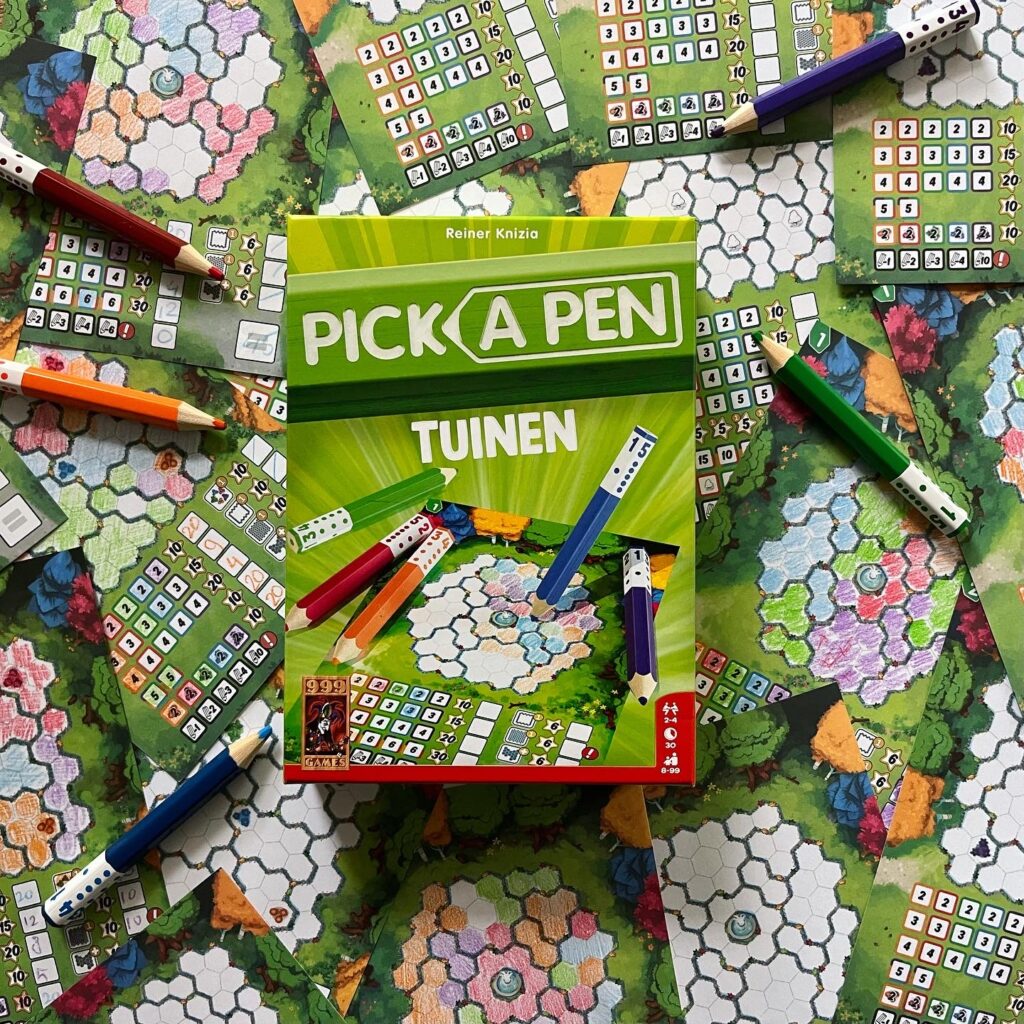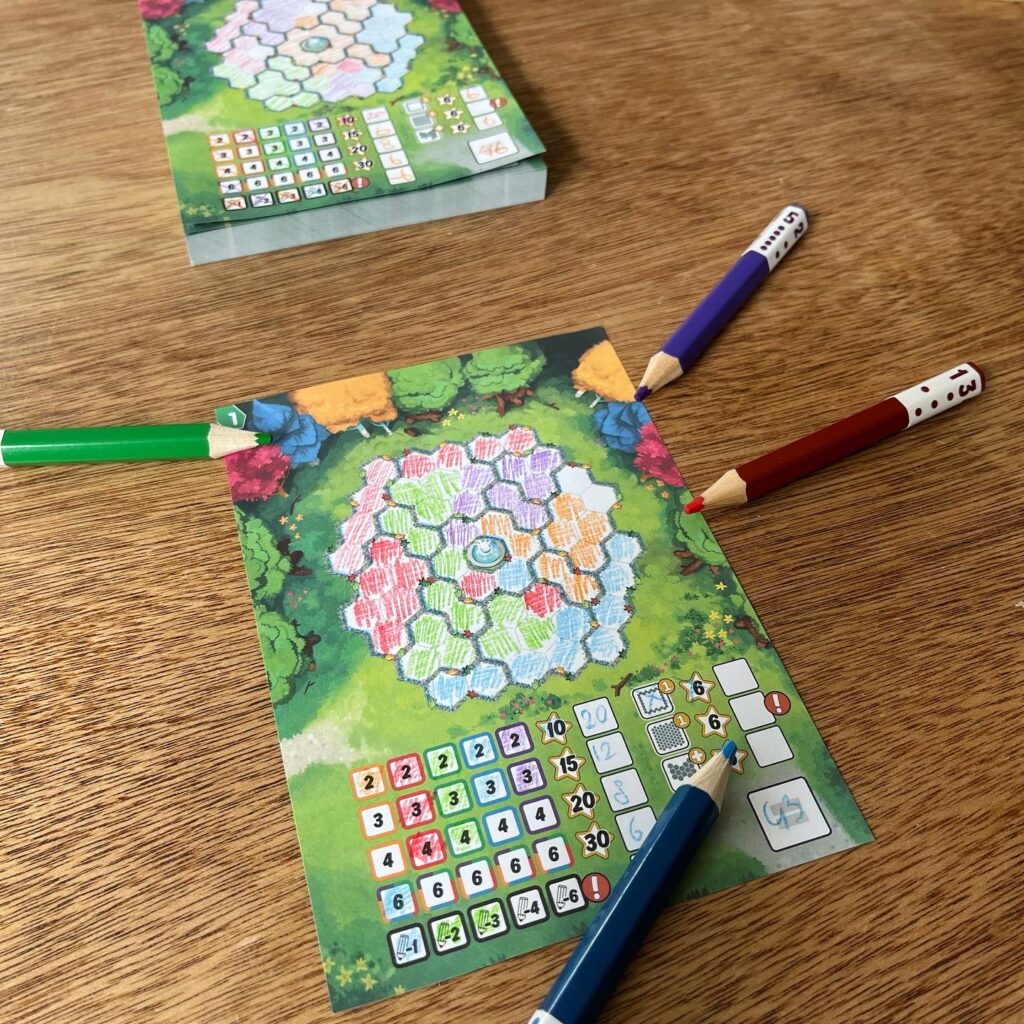Do you dare to color both inside and outside the lines to scribble together a sleek and colorful garden? For this game, just having a green thumb is not enough, because only by showing your true colors can you plant a colorful garden. Make your opponents turn green with envy as you look on your garden up from your rainbow of joy.
A publisher once told me that renowned game author Reiner Knizia (of Lost Cities, El Dorado, Schotten Totten and hundreds of other games, among others) sees a new game concept in almost everything. This man sometimes even seems to invent and pitch a game idea on the spot. So I picture the conception of Pick a Pen (a new roll-and-write series from 999 Games) as follows: Mr. Knizia is busy working on his coloring book and drops his colored pencils. The pencils roll across the table, Reiner looks intently at his half-filled coloring book, and a game idea is born. Indeed, in Pick a Pen games, players start rolling different colors of pencils with a symbol on each side as dice to fill in a score sheet.

I already called Pick a Pen a series. In fact, there are 3 games introduced simultaneously in this series. Each game has different gameplay, but each of these games does use the same mechanics where players have to roll pencils. We are covering Pick a Pen Gardens, where players will color a large area with multiple (currently) colorless gardens with their pencils to earn as many points as possible.
In Gardens, players are given a scoring sheet with an area consisting of several gardens with different amounts of hexagons (spaces). Each turn, the active player rolls all the dice … I of course mean: pencils and from the rolled pencils, the active player first chooses an available pencil and then the pencils are distributed. The player who can no longer pick a pencil is now the active player. So it may happen that some players can color more during a turn.
Each pencil contains the following amount of dots/numbers: 1, 1, 2, 3, 4, 5. The number you pick therefore indicates how many squares you may color on your sheet. You may place your first lick of color as you choose, but after that you must always color adjacent to previously colored squares. You may fill in the gardens. Each time you complete a garden with the same color or with all different colors, you get points that you may check off. You get bonus points if you manage to complete multiple colors or if you complete multiple gardens with variegated colors. You also get points if you are the first to fill the edge of the score sheet or the first to fill the entire score sheet. In the latter case, the game ends immediately. The game also ends immediately if someone could not or would not use a pencil six times. By the way, you also get minus points for that. Finally, you also get points if you manage to draw the largest contiguous area in the same color. That area may be cross over multiple gardens.

I said final scoring method in my previous paragraph, but Pick a Pen contains three different types of scoring sheets of increasing complexity. There is also a sheet of roses for which you get points if the fields of roses are colored in the same color as the rose. That player who is first to collect all the roses (regardless of color) gets bonus points. In the last variant, players will color trees for points, but these trees themselves are still pretty colorless. All variants also contain a different composition of gardens each time, so the box contains quite a bit of variety.
Pick a Pen is fairly simple roll-and-write with a nice gimmick. Could this game be played with dice? Sure, you’d need 5 different colors of dice with unique symbols and 5 colors of pencils, but using the pencils does make the gameplay innovative and less cumbersome. You choose a pencil and the color and symbols/numbers are clearly indicated. Of course, the gimmick also makes the game series inviting and somewhat innovative. Don’t expect a highly complex and deep strategic game, but a fun and light-hearted puzzle that is easy to explain and get on the table during summer evenings at the campsite or in the gardens.




